Are you looking for a quick, inexpensive way to renovate your floors? Vinyl tiles might just be a perfect choice. Available in various patterns and sizes, these tiles have a low and soft profile, are water-resistant, do not break easily, and are easy to repair. Vinyl can spruce up any room from the kitchen to the bathroom and even the laundry area.
In this guide, we show you how to install vinyl tile flooring. With basic skills and the right tools, you can complete this project in one or two days, depending on the size of the room. There are two types of vinyl tiles—the peel and stick self-adhesive tiles and the ones that are installed using adhesive. Here’s we will focus on the vinyl tiles that are installed using adhesive.
Table of Contents
Tools and Supplies You Will Need
- Vinyl tiles
- Vinyl adhesive
- Belt sander
- Plywood planks
- Utility knife
- Putty knife
- Prying bar
- Floor roller
- Tape measure
- Chalk line
- Dusk mask
- Knee pads
- Tiling sponge
- Notched trowel
Step-by-Step Guide To Install Vinyl Tile Flooring
Follow these steps to lay new vinyl tile flooring.
Step 1: Prepare the surface
You can install vinyl tiles on concrete, ceramic, and even existing vinyl flooring. However, the surface must be clean and well-leveled for the tiles to adhere firmly to the adhesive. If you have a ceramic floor, it is best to remove these tiles before laying the vinyl.
Repair cracks on a concrete floor with concrete filler. Using a carpenter’s leveler, check for any high or low spots on the floor. Grind down high spots using a belt sander. You might have to use a self-leveling concrete compound to correct a particularly sloppy floor.
If you have vinyl flooring, level the existing floor before laying new tiles. Otherwise, the new tiles will eventually take on the rough texture of the old flooring. Embossing leveler is an excellent choice for straightening any roughness and dents on the old vinyl floor.
You might want to remove the entire floor if it is too old or damaged for an embossing leveler. A more accessible alternative is to build a plywood underlayment on top of the old floor. The underlayment will give you a nice, flat, and stable surface for laying your tiles. You can watch this video on how to build a plywood subfloor.
Step 2: Remove baseboard and cut doorjambs
For a clean look, it is best to remove the baseboard and shoe trim around the room. Simple use a putty knife to cut the paint between the baseboard and walls, then pry out the trim using a pry bar. Remove the baseboard pieces carefully if you plan to reuse them.
Installing tiles under doorjambs can be challenging, and you might not get the clean, finished look you are after. For better results, cut the door trim so you can easily push the vinyl tiles under there.
Use a piece of tile and underlayment to determine how much of the trim you will need to cut out for the flooring to fit snuggly under the door. Once you have this measurement, use an appropriate saw to cut out the correct portion of the trim.
Step 3: Mark your reference lines
Planning your layout ensures that you install the vinyl tiles in a visually appealing and structurally stable pattern. With a layout, you can move faster because you already know how to arrange your tiles.
To get started, you will need two reference lines to guide you in laying out the tiles. You can use a laser leveler or a simple, inexpensive chalk line to create the reference lines.
Using a tape measure, measure the length of one of the walls in the room, then find the center point of the wall and drive a nail at this mark.
Measure the opposite wall and mark the center. Then, hook one end of the chalk line to the nail, pull the line stout to the center mark of the opposite wall, and then snap the line to create a line between these two walls.
Snap another chalk line perpendicular to the first line. The two chalk lines will meet at the center and will divide the room into four parts.
Pro Tip: Before applying adhesive, do a trial-fit by laying the tiles along the straight line and then across the perpendicular line to see how your tiles align and how they might need to be cut before doing a permanent install.
Step 4: Apply the vinyl flooring adhesive
Use a notched trowel to spread the adhesive evenly across the surface of the floor. For easier application, start at one corner of the room and work in sections. Use the notched side of the trowel to comb ridges in the adhesive. Ideally, you should see the subfloor underneath in the spaces between the ridges.
Wait for one section of the floor to dry up before laying the tiles. Installing tiles on wet adhesive will cause air bubbles that can weaken the flooring. Each product is different, so you will need to find the ideal drying time for your vinyl adhesive. Factors such as humidity and temperature will affect drying times.
To check if the adhesive has dried, press your finger in it. The floor underneath will feel sticky, but the adhesive should not stick to your finger. Dry vinyl adhesive will also become lighter in color.
Pro Tip: Check the instructions on the packaging of vinyl adhesive for the appropriate trowel notch size to use.
Step 5: Lay the vinyl tiles
The most efficient way to lay the tiles is to start from the middle of the room where the two chalk lines intersect and work your way outward to the room’s perimeter. Use the chalk lines as a guide to layout the tiles in a straight line. The way you install these first tiles will set the pace for the rest of the installation. Check out this video on best practices for laying tiles.
Place each piece of tiles flat and abutting the previous tile. Avoid sliding the tiles into place as this only drags the adhesive, making for a messy installation.
For tiles that need to go around obstacles such as pipes or corners in the room, trace the pattern using a piece of cardboard, then transfer the pattern to the tile using a contour gauge. You can then use a utility knife to cut out the pattern.
Step 6: Press down the tiles
After laying the first few tiles, use a floor roller to press down the flooring to bind it to the adhesive and subfloor. Apply gentle but steady pressure as you push the roller over the tiles.
It is good to have a tiling sponge on hand to wipe excessive adhesive that may seep in through the narrow spacing between the tiles.
Step 7: Keep going to cover the entire floor with tiles
After you are done with the first section, move on to the next one. Apply the vinyl, lay the tiles, and push a floor roller to get the tiles to bind with the adhesive and subfloor. Repeat this process until the entire floor is covered with vinyl tiles. Once you fill the floor, you might need to cut some tiles to fit around the room’s perimeter.
Step 8: Allow the floor to dry
Give the floor ample time to dry. Depending on your adhesive, the floor might need a couple of hours to dry. During this time, you should completely keep off the floor.
Once the floor has dried, reinstall the baseboard and shoe trim. If you were installing the vinyl tiles in a moisture-prone area such as the bathroom, remember to apply silicone caulk around the walls to prevent moisture leaks that can damage the tiles.
Extended Tips
Here are additional tips to help you get the most from this project
- Find out the number of vinyl tile cartons you will need to ensure that you have enough tiles when you start the project. Calculate the room’s area in meters squared and divide this with the tiles’ area in square meters. Buy a few extra cartons of tiles to account for possible waste.
- Not all vinyl tiles are ‘groutable.’ If you want to replicate a ceramic or porcelain look, ask for groutable tiles. Vinyl also comes in different colors, patterns, and thicknesses, so use these variations to select tiles that suit your style and needs.
- When kneeling on tiles that you have just laid, it is a good idea to place a piece of timber between your knee and the floor to keep the tiles from sliding out of place.
- At least 48 hours before you begin the project, transfer the tiles to the room you will be working on to allow the tiles to acclimatize.
- Before you get started, mix tiles from different cartons. This ensures that the tiles are a varied pattern throughout the floor.
Transform any room for cheap with vinyl tile flooring
Deciding to install vinyl tile flooring is smart for your pocketbook and your home’s aesthetic appeal. If you want a softer and gentler floor, vinyl tiles are an excellent alternative to porcelain and tiles. As you can see, you do not need to be a pro to install this type of flooring. Using our guide, you will be well on your way to having a swanky new floor in just a few hours.
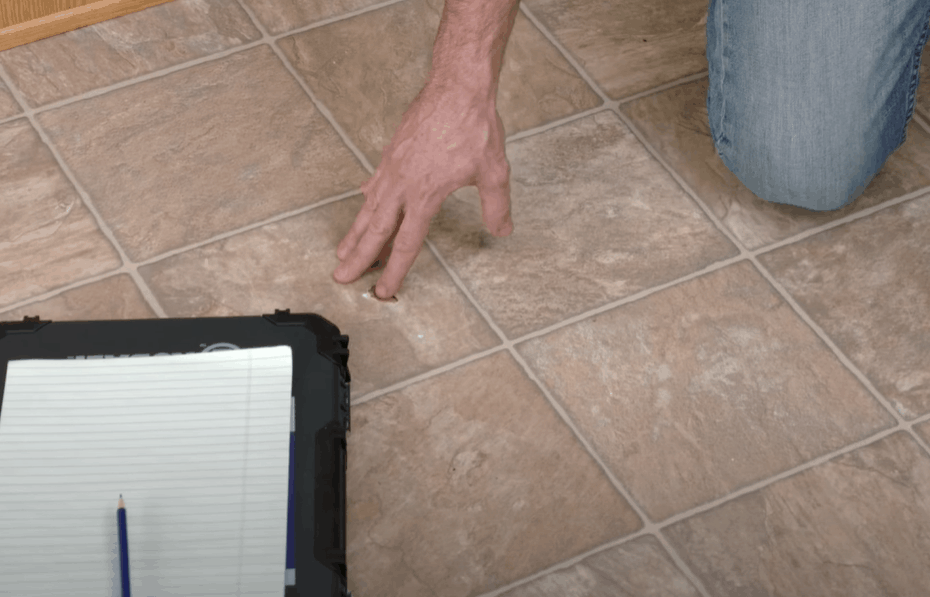
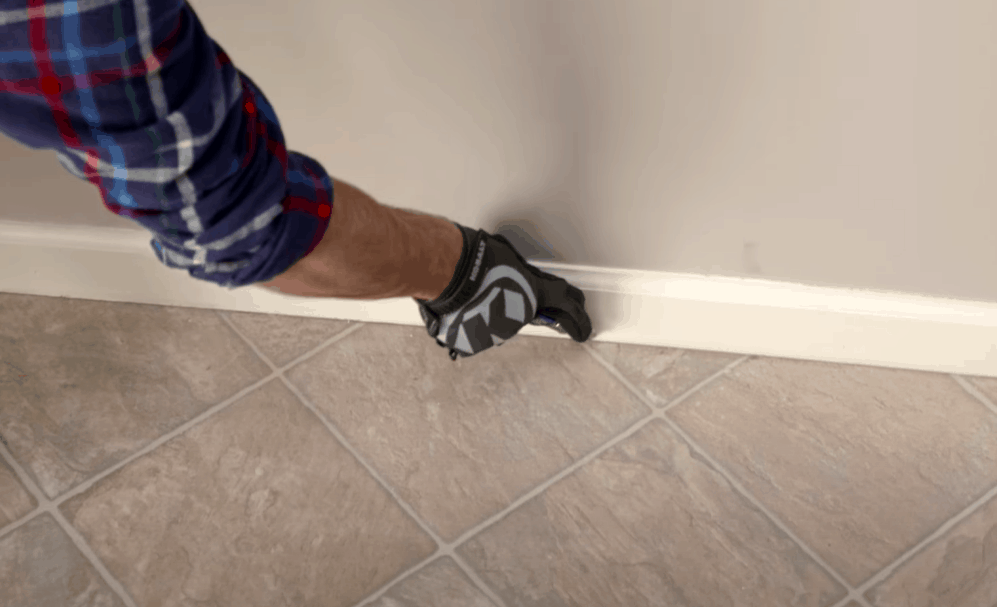
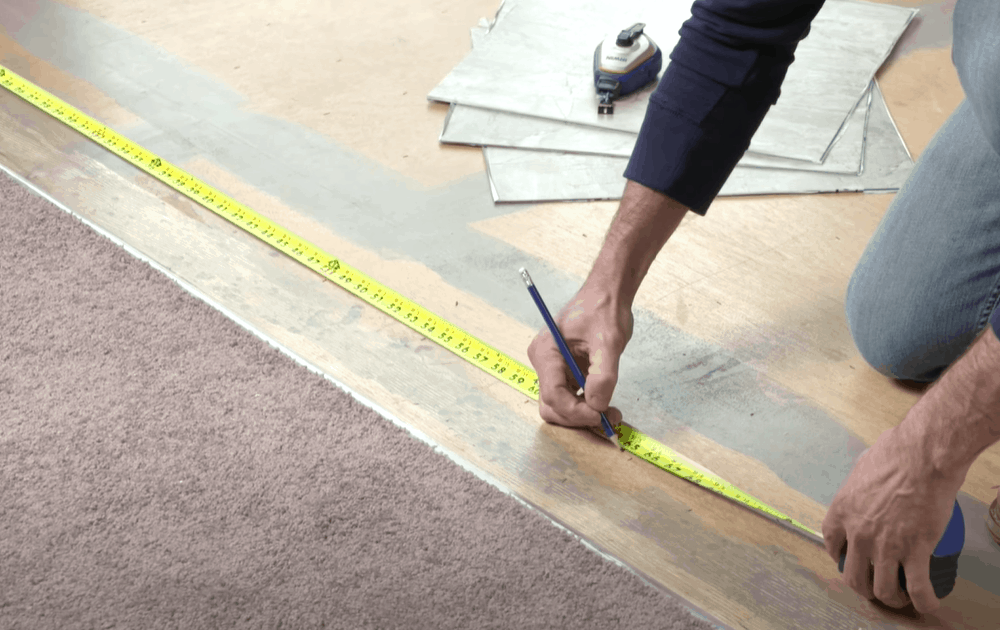
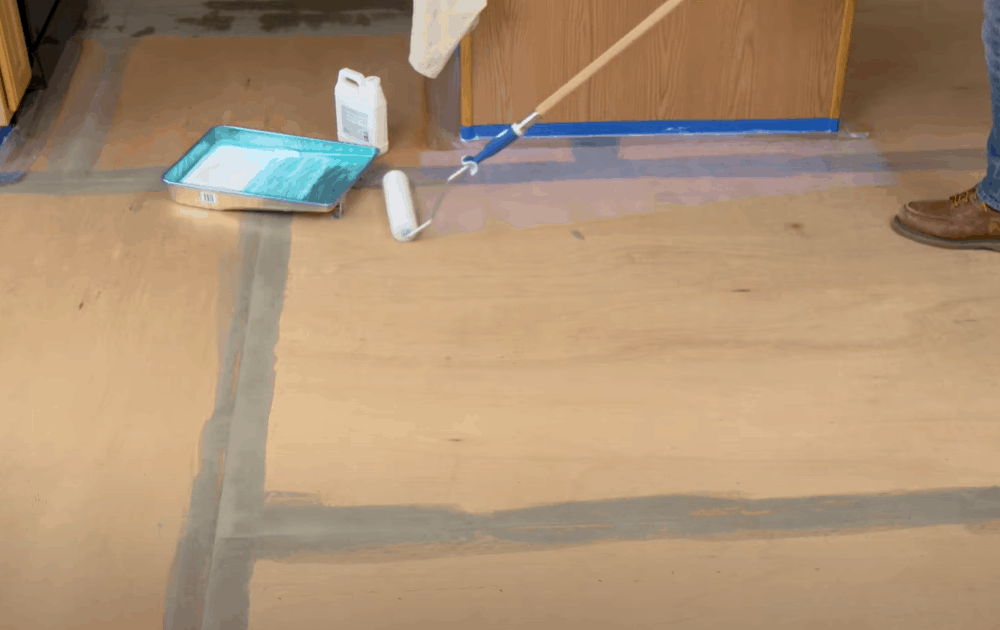
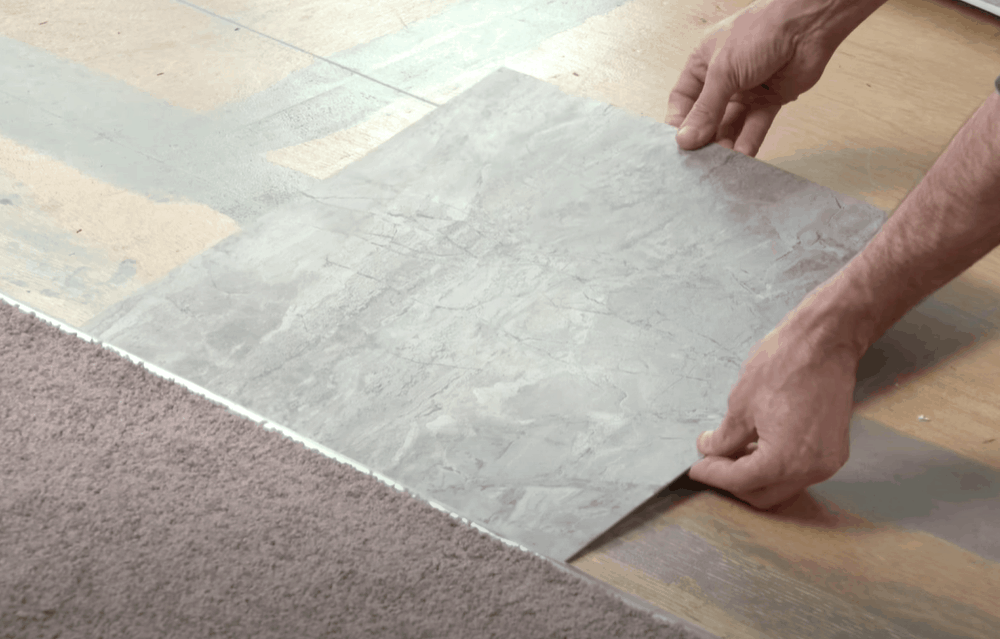
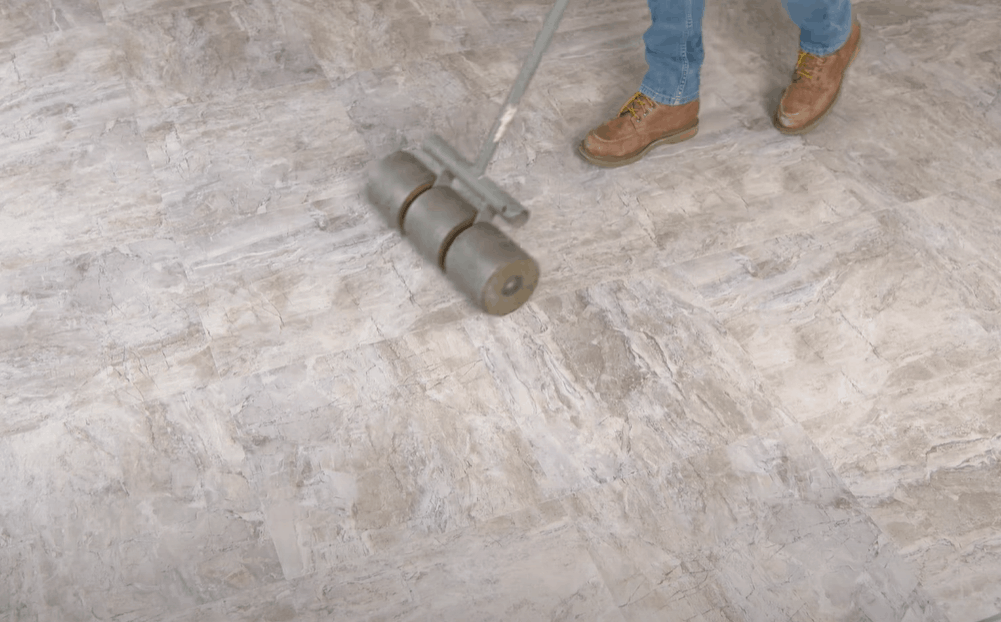
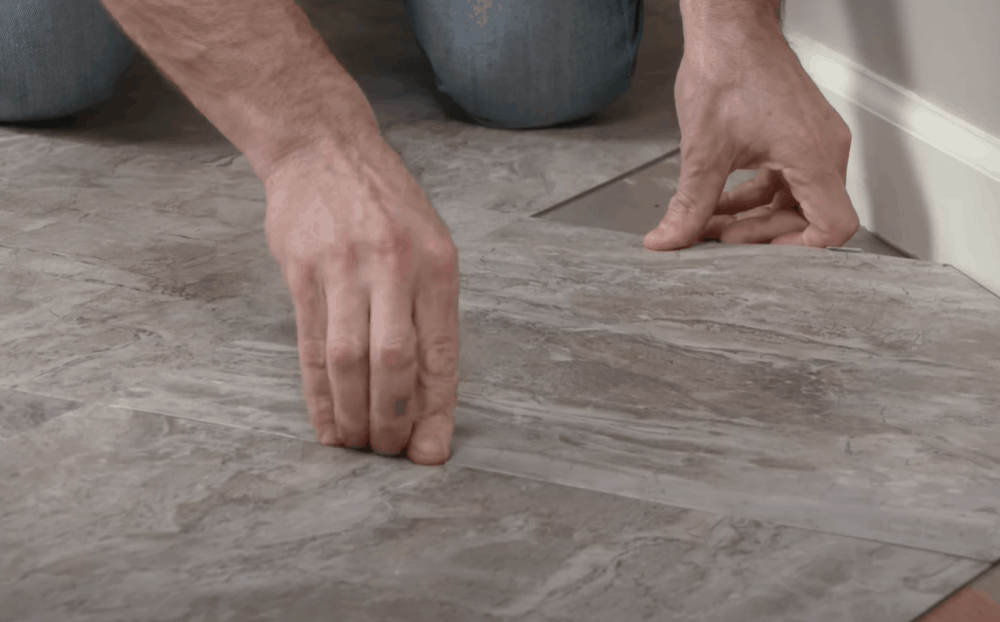
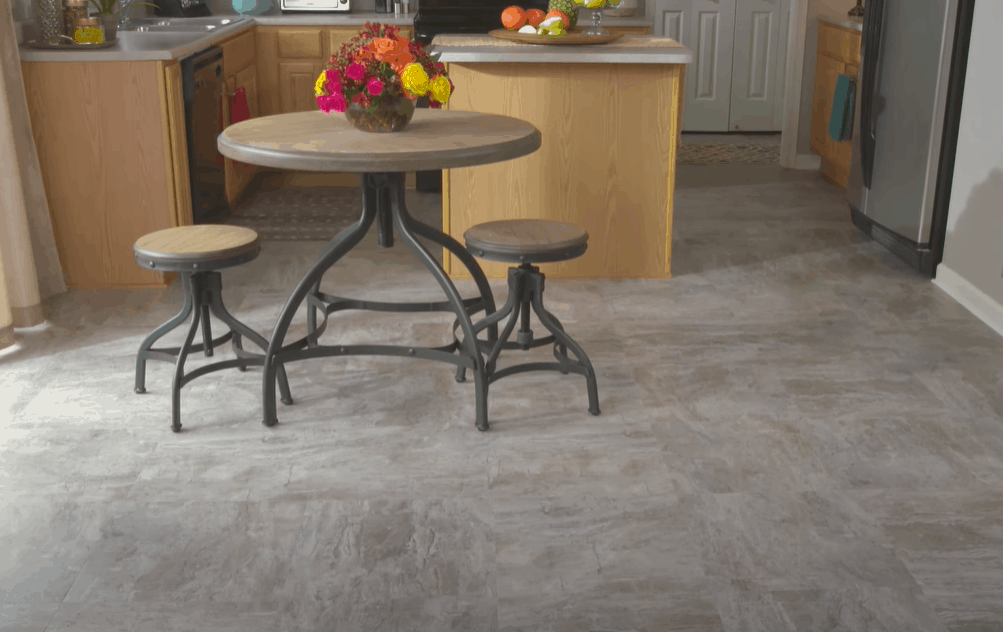
Greetings
Kindly share the vinyl tiles JSA to perform safe installation of vinyl floor tiles